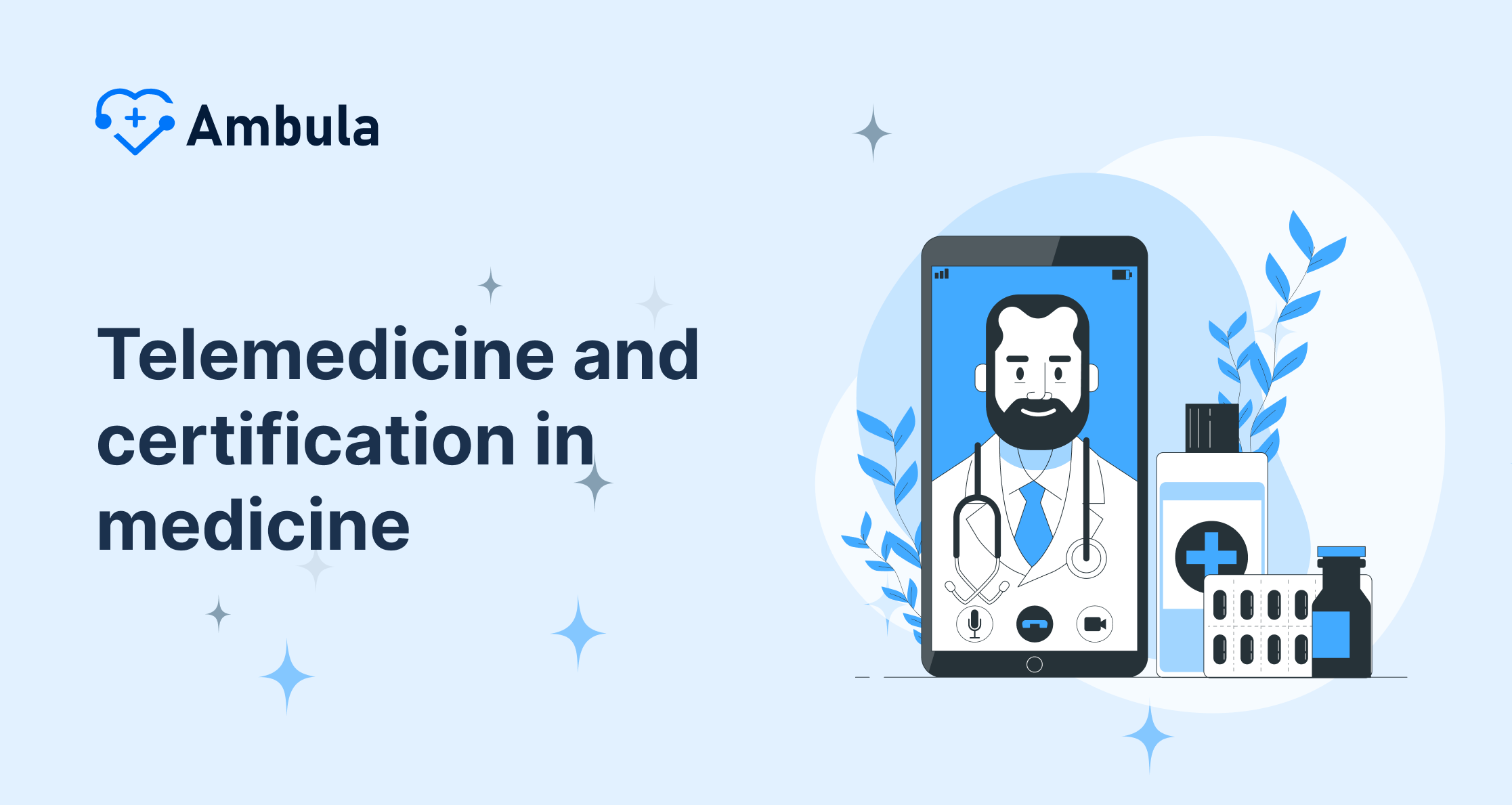In healthcare, security, and competence are critical issues for patient care and the practice of medicine. Credentialing underpins trust in healthcare systems and provides a binding assurance of qualification for healthcare practice. In other words, it is an authentication process of health care providers’ qualification, capacity, and competence to ensure they meet the industry’s standards. Its importance has magnified in this complex and interlinked healthcare delivery systems age. Thus, an understanding of the meaning of credentialing must be essential to any healthcare administrator and all patients who want the best standards of medical care.
What Is Credentialing?
Credentialing is the verification by health services organizations of the qualifications and experience of clinicians. This verification is required to establish whether people are competent to deliver safe, quality health care within the scope and setting of their practice. The exercise of credentialing is more than a check of qualifications. Credentialing is the foundation for patient safety in that clinicians should not practice duties and functions other than those they have been trained in and for which services can be safely provided. General systems of quality and risk management within an organization provide the mechanism for credentialing to support patient safety.
Types of credentials
Credential types are based on interaction with labor market demand, using employer signaling, industry validation mechanisms, and state regulation as filters.
Here’s a breakdown of the most common types:
-
Licenses: Issued by state regulatory bodies (medical boards, nursing boards, etc.), licenses grant permission to practice a specific healthcare profession within that state. They typically require passing a standardized exam and meeting minimum education and experience requirements.
-
Certifications: Offered by national organizations or specialty boards, certifications demonstrate expertise in a specific area beyond the baseline knowledge required for licensure. They often involve additional education, experience, and passing a certification exam. While not always mandatory, they can enhance career prospects and demonstrate advanced skills.
-
Registrations: Similar to certifications, registrations attest to a person’s ability in a specific field. Registration prerequisites can differ—some are exam-based, and others are based on education or the satisfactory completion of training programs.
Credentialing costs
The key difference between licenses and certifications/registrations lies in their legal weight. Licenses are mandatory for practicing a profession within a state, while certifications and registrations demonstrate additional qualifications but may not be legally required for basic practice.
Credentialing costs can vary depending on whether you’re dealing with an individual provider or a larger organization, but here’s a breakdown with real-world data:
-
Individual Physician Credentialing: According to sources like MedTrainer, this typically costs between $100 and $200 per physician. This applies to both initial credentialing and re-credentialing, which usually happens every two years.
-
Outsourcing vs. In-House: Organizations can manage credentialing in-house with dedicated staff or outsource it to credentialing service providers. In-house staffing can add up quickly, with an average medical staff credentialing specialist salary exceeding $43,000 per year, according to Salary.com. This doesn’t include additional costs like office space, equipment, and benefits.
-
Credentialing Service Packages: For outsourcing, physician credentialing service packages typically range around $200 per plan per provider, based on info from Physician Practice Specialists.
-
Total Costs per Physician: Studies like PrognoCIS EHR estimate the total cost to credential a physician, including staff time and service fees, to be around $1,660 per provider for 5 insurance companies. This cost can increase significantly with more insurance plans.
Overall spending in the US
- Annual Spending: Healthcare organizations in the US spend an estimated $39 billion annually on administrative tasks related to credentialing compliance (https://www.modiohealth.com/). This highlights the potential for streamlining the process.
The Credentialing Process
- Application Submission: Healthcare providers must submit a detailed application that includes their professional history, qualifications, and references.
- Primary Source Verification: The credentialing entity verifies the credentials from the primary source, such as medical schools, previous employers, and certification boards.
- Committee Review: A credentialing committee reviews the collected information to decide on the provider’s privileges within the healthcare facility.
- Ongoing Monitoring: Credentialing is an ongoing process that requires regular updates and re-evaluations to ensure continuing compliance with healthcare standards.
Regulatory Framework
The Credentialing Regulatory Framework in the healthcare industry is critical for ensuring patient care quality and safety. This framework’s heart is the adherence to Conditions of Participation (CoPs) outlined in Title 42 of the Code of Federal Regulations. These regulations set the standard for credentialing and privileging practices that hospitals must implement to participate in Medicare and Medicaid programs.
Despite the absence of a federal mandate for a uniform credentialing process, these standards are pivotal in guiding hospitals through the complex terrain of healthcare provision. Hospitals must collect and verify extensive data about each medical practitioner’s qualifications, training, and experience to ensure they meet the necessary competence levels. This thorough evaluation helps mitigate risks and manage medical errors and patient safety liabilities.
Who Needs Credentialing?
Credentialing is required by all insurance companies, hospitals, and healthcare organizations, making it compulsory for all healthcare providers to have to do so. This way, patients can trust the care offered by a practitioner while the practitioner accesses the insurance networks to which services can be billed. Below are the various practitioners and organizations that require credentialing:
- Ambulatory Surgery Center – free-standing only
- Birth Center – free-standing only
- Home Health Care Agency – provides skilled nursing services (not a PCA-only agency)
- Hospital – all types, including psychiatric
- Skilled Nursing Facility/Nursing Home
The Role of Technology in Credentialing
technology’s integration into credentialing has verified the qualifications, making processes more efficient and reliable. Among these technological innovations, digital credentialing services are a transformative force. These services utilize digital platforms to verify credentials electronically, making cumbersome manual checks a thing of the past.
According to a report by Market Research Future, the global digital assurance market, which encompasses these services, is anticipated to grow at a compound annual growth rate (CAGR) of approximately 14% from 2017 to 2023. This growth is largely driven by the increasing demand for digital assurance across various sectors, including credentialing. The shift towards digital platforms allows for credentials to be verified in real-time, drastically cutting down processing times and enhancing overall efficiency.
Credentialing software
Credentialing software acts as a digital assistant for verifying and managing the qualifications of individuals within organizations. This is especially useful for fields where staff must maintain specific licenses or certifications or complete regular training.
When choosing credentialing software, consider your organization’s specific needs. Think about the functionalities most important to you, how well the software can scale as your organization grows, and how much it costs. User-friendliness for both administrators and credential holders is also crucial.
Popular Credentialing Software Options:
- Accredible
- Credly
- Sertifier
- MedTrainer
- CertifyMe Credentials
- Certopus
- Modio Health OneView
- Give My Certificate
- VMware Learning Platform
- BadgeCert
Common Challenges and Solutions
Credentialing, while essential, is not without its challenges:
- Delays in Processing: Manual verifications can lead to significant delays. Solution: Leveraging automated verification tools can accelerate the process.
- Data Management Issues: Handling large volumes of sensitive data can be cumbersome. Solution: Implementing robust data management and cybersecurity systems ensures efficiency and security.
- Compliance with Regulations: Keeping up with changing regulations is often challenging. Solution: Continuous training and adoption of compliance software can help stay updated.
 Telehealth and Credentialing
Telehealth and Credentialing
With the rise of telehealth, credentialing faces new challenges and considerations. Telehealth services require providers to be credentialed not only in the state where they are physically located but potentially also in the state where the patient is receiving care. This has led to calls for more streamlined, national credentialing processes to facilitate easier access to telehealth services across state lines.
Conclusion
As healthcare continues to evolve, so must the processes that ensure the quality and safety of care. Credentialing is at the forefront of this mission. Healthcare facilities must regularly review and enhance their credentialing processes to keep pace with technological advancements and regulatory changes. Doing so not only upholds the standard of healthcare but also fortifies the trust placed in healthcare providers by patients everywhere. Now is the time to invest in efficient, secure, and effective credentialing systems, ensuring that healthcare standards are met and exceeded.
About the Author: Mousa Kadaei
Related Posts
Elevate your practice to the next level
Let us show you how to save 2 hours a day.






